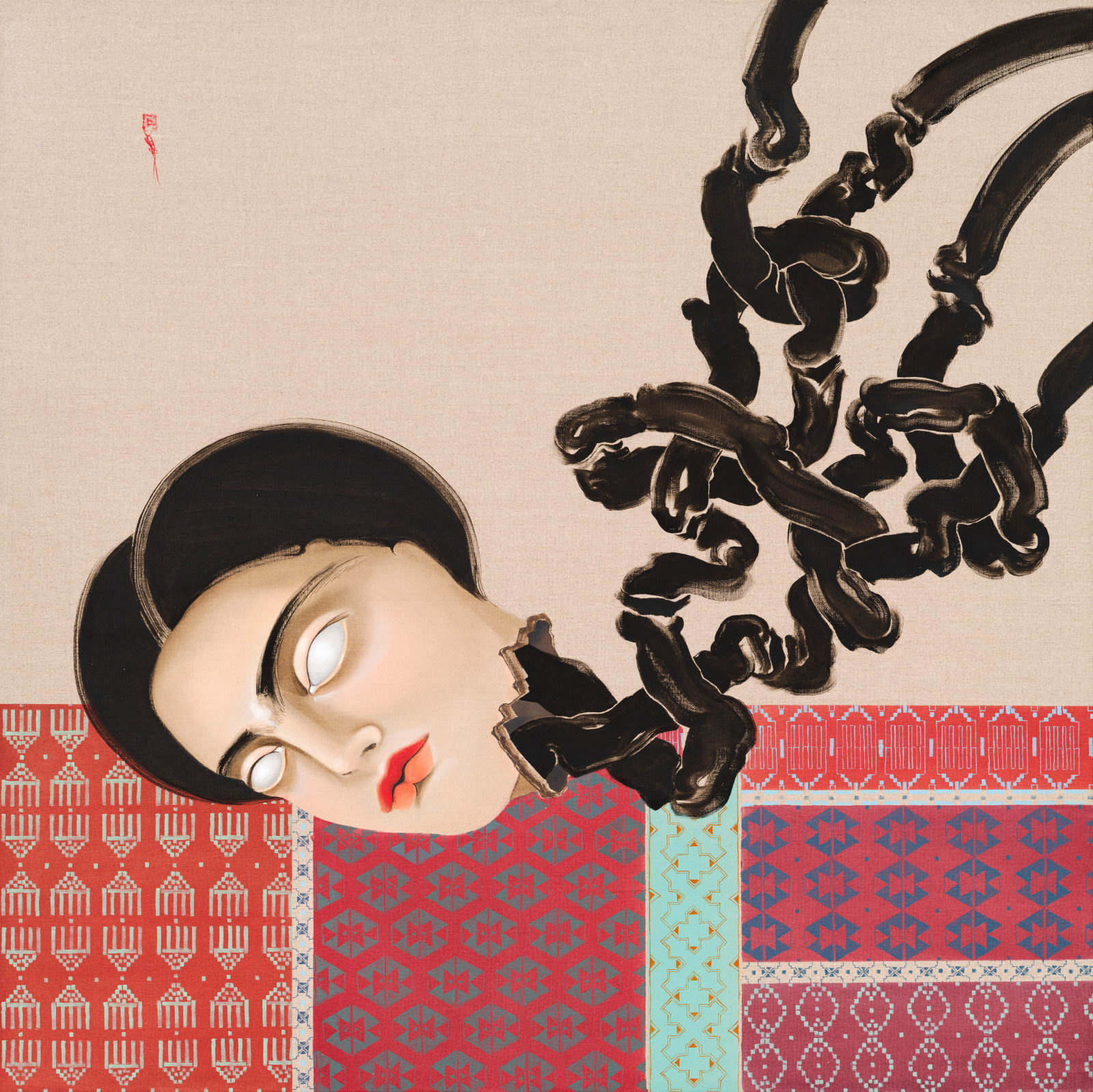




Hayv Kahraman
NeuroBust no.5, 2022
Oil on linen
88.9 x 88.9 cm
35 x 35 in
35 x 35 in
Copyright The Artist
Further images
Paintings from her 'Neurobust' series depict ghostly, fragmented bodies that are put on display as choking, fragmented effigies propped up on steel rods like museum artefacts. The organ-like forms appear...
Paintings from her 'Neurobust' series depict ghostly, fragmented bodies that are put on display as choking, fragmented effigies propped up on steel rods like museum artefacts. The organ-like forms appear once again, this time from the dismembered busts slithering out of puffy lips and gathering around necks. These broken sculptures are bodies that feel hurt. Hayv’s interest in neuroscience began with the loss of her mother. Hayv discovered that one of the last books she had been reading before her death concerned 'neurosculpting', the potential for changing neural pathways that were previously considered set. 'In the field of PTSD, this is massive. It was interesting that she, an Iraqi immigrant, had chosen this book.'
The patterns in the work specifically come from tessellations Hayv has found in traditional indigenous kurdish rugs/carpets. Each polygon has a meaning, creating its own language. These rugs are and were usually woven by local women and many of the symbols represent fertility, life, family, love and women. This was a way for them to speak among themselves and to the world.
These patterns are the last element Hayv puts on the painting. While her painting process is very systematic and organised, the pattern is more intuitive, she might be trying to channel my ancestors here. She feels that making them is inherent in her body somehow - like it just comes out.
The patterns in the work specifically come from tessellations Hayv has found in traditional indigenous kurdish rugs/carpets. Each polygon has a meaning, creating its own language. These rugs are and were usually woven by local women and many of the symbols represent fertility, life, family, love and women. This was a way for them to speak among themselves and to the world.
These patterns are the last element Hayv puts on the painting. While her painting process is very systematic and organised, the pattern is more intuitive, she might be trying to channel my ancestors here. She feels that making them is inherent in her body somehow - like it just comes out.




